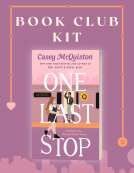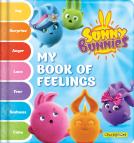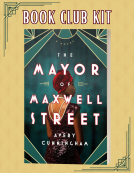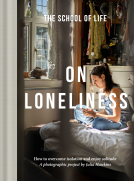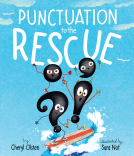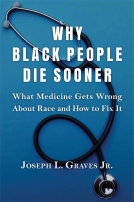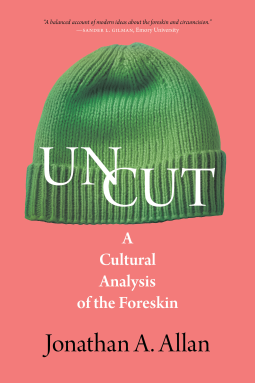
Uncut
A Cultural Analysis of the Foreskin
by Jonathan A Allan
This title was previously available on NetGalley and is now archived.
Send NetGalley books directly to your Kindle or Kindle app
1
To read on a Kindle or Kindle app, please add kindle@netgalley.com as an approved email address to receive files in your Amazon account. Click here for step-by-step instructions.
2
Also find your Kindle email address within your Amazon account, and enter it here.
Pub Date Nov 05 2024 | Archive Date Oct 22 2024
Talking about this book? Use #Uncut #NetGalley. More hashtag tips!
Description
Uncut explores the significance of the foreskin in contemporary culture
The “uncut” penis is viewed by some as attractive or erotic, and by others as ugly or undesirable. Secular parents of male infants worry about whether or not the foreskin should be removed so their little boy can grow up to “look like dad” or to avoid imagined bullying in the locker room. Medical experts and public health organizations argue back and forth about whether circumcision is medically necessary, while “intactivists” advocate that removing an infant’s foreskin without their consent is mutilation.
Uncut: A Cultural Analysis of the Foreskin takes an interdisciplinary approach to understanding the foreskin and its contentious position in contemporary Anglo-American culture. From language to art, from religion to medicine and public health, Uncut is a provocative book that asks us to ask ourselves what we know and don’t know about this seemingly small piece of skin.
Drawing on all these threads, Jonathan A. Allan leads us through the history and cultural construction of the foreskin—from Michelangelo’s David to parenting manuals, from nineteenth-century panic over masturbation to foreskin restoration—to ultimately ask: what is the future of the foreskin?
Available Editions
| EDITION | Other Format |
| ISBN | 9781779400307 |
| PRICE | $29.95 (USD) |
| PAGES | 352 |
Available on NetGalley
Average rating from 19 members
Featured Reviews
I have to be honest and say that as a cisgendered woman I have not thought much about the foreskin. This book changed that and opened my eyes to a fascinating debate! It covers the history of circumcision as well as discussing current cultural thoughts and trends in an accessible, inclusive, and exciting way. It is incredibly well researched and informative.
 Educator 1237621
Educator 1237621
Uncut was an interesting book to read, a middle child of sorts to Mary Roach’s Boink and Rachel’s Gross’ Vagina Obscura. Allan was able to hold the line of academic voice with subtle humor but truly allowed his research to make the humor for him. The book was incredibly full of information from scholarly, religious, medical, and even pop-cultural sources. I appreciated the frankness with which he wrote, merely laying out all of the cards and allowing the reader to decide on what to think. He did a fantastic job at pointing out the biases against “intact” members in popular books, movies, and shows and also highlight the religious and historical connections. His chapter on pregnancy books was particularly powerful, highlighting the information found in what should be objective sources to be more biased than one would think, and made interesting arguments about the very language we use to describe uncircumcised penises. All in all, a rather fun read, though more informative and scholarly. Mary Roach will always be the best in this field, as her books are laugh out loud funny and scholarly, but Allan is a close second, threading that needle of academic and dry in a way that made reading about penises more enjoyable than I’d like to admit,
I appreciated the thorough discussion of both sides of various arguments made throughout the book. The writing was easily digestible for a nonfiction/academic read. Thank you netgalley for the free copy to read and review.
 Reviewer 1344354
Reviewer 1344354
I picked up another book recently on the subject of circumcision, which, first of all, I DNF-ed because it was poorly written, and two, it was focused on intactivism as opposed to an overview of the subject and issues. In comparison, Allan’s book gave me exactly what I was looking for in trying to understand this subject better and more thoroughly. Although this is an academic text, I found the text to still be fairly accessible, and Allan’s writing is concise while still retaining thoroughness and nuance.
I could feel Allan’s struggle to keep his focus on the foreskin (the precise subject of his book) while the specter of circumcision lurks behind every sentence. The foreskin is only interesting to us because of its disappearing act, so to speak. Thus trying to talk about something that is interesting for its lack of presence is hard to do without discussing the process that eliminates it from view. But I found myself persuaded by Allan’s argumentation and evidence presentation, even when I was resistant to his points (a resistance I will fully admit was due to my own pre- and misconceptions).
Allan’s stated goal is to write an archive of the foreskin, tracing the foreskin through many different media for different audiences to explore all the different ways people engage with the foreskin and why. What are the stakes and anxieties of the discussions of the foreskin, and how are those played out in AMAB individuals’ bodies? He examined parenting manuals, sex manuals, intactivist literature, and classical and contemporary art, among others, to facilitate this discussion. Even though he covers such a broad range of topics, Allan is always careful to explicitly state that his arguments should under no circumstances be taken as antisemitic, Islamaphobic, or otherwise disparaging of religious practices or even cultural practices. He is not “taking a side” on the issue of circumcision; his goal is to present some of the main ways the foreskin has been discussed in North American contemporary media (he’s Canadian, but American cultural mores heavily influence Canada, so realistically he primarily analyzed works from the US).
I have never been very interested in men’s and masculinity studies (I have a degree in women’s studies, after all), but I do think the field is important to show how patriarchy and compulsory heterosexuality impact men in negative and potentially traumatic ways. The reach of feminism has been expanding to an anti-patriarchy movement, critiquing all of the ways that patriarchal systems and structures hurt everyone, including the white cismen the system privileges. This is not to make the argument men are suffering from their male privilege to a greater degree than women are suffering under patriarchal oppression but to note that the system as a whole is damaging to mental and physical health. The manosphere and men’s rights activist groups have really done a disservice to men in co-opting useful terms and hiding serious issues under misogynistic garbage to the point where actual problems men are facing in our current culture are difficult to discuss without sounding misogynistic at points. I found my hackles rising at some points in Allan’s book because of my previous experiences with people talking about some of the issues in his book; they are usually presented in the context of men trying to argument that the world actually operates on “female privilege” and men are the truly disadvantaged ones in our society.
I hope that men reading this book or men contemplating these issues and their relationship to their circumcision status can develop a level of empathy for women who have medical procedures denied them or forced upon them because of their gender or who have had their stories of trauma dismissed because of their gender. All things which were discussed in testimonies from men within this book. I hope that, ultimately, this book can be used to bring men and women together to understand the problem is the patriarchal hegemony we live under that forces us from birth to conform to certain standards for gender that are also impossible to perfectly attain.
Readers who liked this book also liked:
We Are Bookish
General Fiction (Adult), Romance, Women's Fiction
Carine Laforest;
Children's Fiction
We Are Bookish
Historical Fiction, Literary Fiction, Multicultural Interest
Fumiyo Kouno
Arts & Photography, Comics, Graphic Novels, Manga, Reference
Sravana Borkataky-Varma; Anya Foxen
Health, Mind & Body, Nonfiction (Adult), Religion & Spirituality


